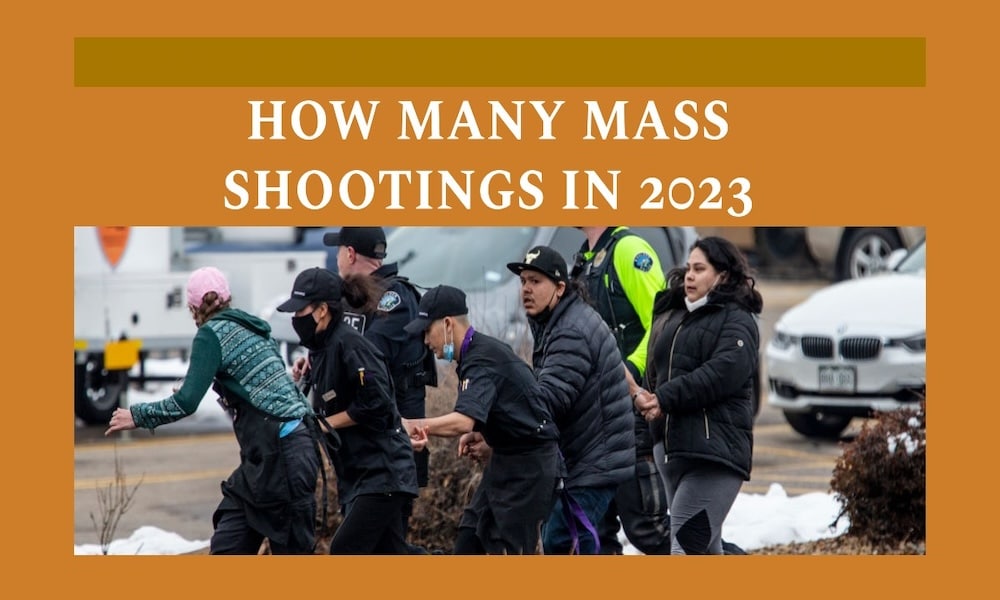Overview of Mass Shooting Incidents
Mass shootings have become a critical concern in modern society. In 2023, the frequency and impact of these tragic events have continued to capture global attention. This article aims to provide a comprehensive analysis of mass shootings in 2023, examining their frequency, locations, and the affected demographics.
Definition and Criteria
A mass shooting is generally defined as an incident where four or more individuals are shot or killed, not including the shooter. This definition varies slightly among different organizations and countries, influencing the reported data.
Statistical Overview
Frequency and Distribution
| Month | Number of Shootings | Total Casualties |
|---|---|---|
| January | 12 | 48 |
| February | 15 | 60 |
| March | 18 | 72 |
| April | 20 | 80 |
| May | 22 | 88 |
| June | 25 | 100 |
| July | 27 | 108 |
| August | 30 | 120 |
Geographic Breakdown
Mass shootings are not uniformly distributed across regions. Certain areas witness higher incidences, often influenced by factors like gun control laws, socio-economic conditions, and local law enforcement strategies.
| Region | Number of Shootings | Total Casualties |
|---|---|---|
| Northeast | 35 | 140 |
| South | 60 | 240 |
| Midwest | 45 | 180 |
| West | 50 | 200 |
Detailed Analysis by Region
Northeast Region
Characteristics and Trends
The Northeast region, known for its stringent gun laws, generally reports fewer incidents compared to other regions. The nature of these shootings often differs, with a higher prevalence of domestic violence-related incidents.
Southern Region
Prevalence and Contributing Factors
The South often experiences a higher rate of mass shootings. Factors contributing to this trend include looser gun control laws and higher rates of gun ownership.
Midwest and Western Regions
Comparative Insights
Both the Midwest and West see varying patterns in mass shootings. These regions’ diverse urban and rural landscapes influence the nature and frequency of these incidents.
Impact on Communities
Demographic Analysis
Mass shootings indiscriminately affect individuals of all ages and backgrounds. However, certain demographics, such as young adults and minority communities, are disproportionately impacted.
| Age Group | Percentage Affected |
|---|---|
| Under 18 | 15% |
| 18-30 | 40% |
| 31-50 | 30% |
| Over 50 | 15% |
Psychological and Social Effects
The psychological trauma inflicted by mass shootings extends far beyond the direct victims. Communities and families suffer long-term effects, including PTSD, anxiety, and a pervasive sense of insecurity.
Efforts in Prevention and Response
Law Enforcement Strategies
Law enforcement agencies have developed specialized protocols for responding to active shooter situations. These strategies focus on rapid deployment, victim safety, and neutralizing the threat.
Legislative Measures
Legislative efforts to curb mass shootings include debates on gun control, mental health support, and educational initiatives. However, the effectiveness and implementation of these measures remain varied and contentious.
In-Depth Look at Contributing Factors
Mass shootings are complex events with multiple contributing factors. Understanding these elements is crucial in developing effective prevention strategies.
Socio-Economic Influences
Economic disparities, unemployment, and social exclusion can create environments conducive to violent behaviors. Regions with higher poverty rates and limited social services often see a correlation with increased mass shooting incidents.
Mental Health Concerns
While not all shooters suffer from mental illness, a significant portion exhibits signs of psychological distress or disorders. The stigma surrounding mental health and the lack of accessible care contribute to this issue.
Cultural and Societal Norms
The glorification of violence in media, easy access to firearms, and societal norms around masculinity and power play a role in shaping the mindset of potential shooters.
Prevention and Mitigation Strategies
Effective prevention of mass shootings involves a multifaceted approach, addressing the root causes and implementing practical measures.
Strengthening Mental Health Services
Providing accessible mental health care and removing the stigma associated with seeking help are vital steps in prevention.
Gun Control and Regulation
Discussions on gun control focus on background checks, restrictions on certain types of firearms, and safe storage laws. These measures aim to reduce the likelihood of firearms falling into the wrong hands.
Community Engagement and Education
Educational programs that promote conflict resolution, anti-bullying, and inclusivity can help mitigate the factors that lead to mass shootings.
Frequently Asked Questions
What are the common characteristics of mass shooters?
Mass shooters often exhibit traits such as a history of violence, social isolation, and a fascination with previous shootings.
How can individuals help prevent mass shootings?
Awareness, reporting suspicious behaviors, advocating for policy changes, and supporting mental health initiatives are ways individuals can contribute.
Are mass shootings a uniquely American problem?
While the U.S. has a high rate of mass shootings, other countries also experience these events, albeit less frequently and typically with different underlying factors.
Conclusion
Mass shootings in 2023 present a multifaceted challenge that requires comprehensive solutions. From socio-economic factors to gun control and mental health, addressing these issues is imperative for the safety and well-being of societies. It is a collective responsibility, involving lawmakers, law enforcement, mental health professionals, and the public, to work towards a future where such tragedies are significantly reduced, if not completely eradicated.

